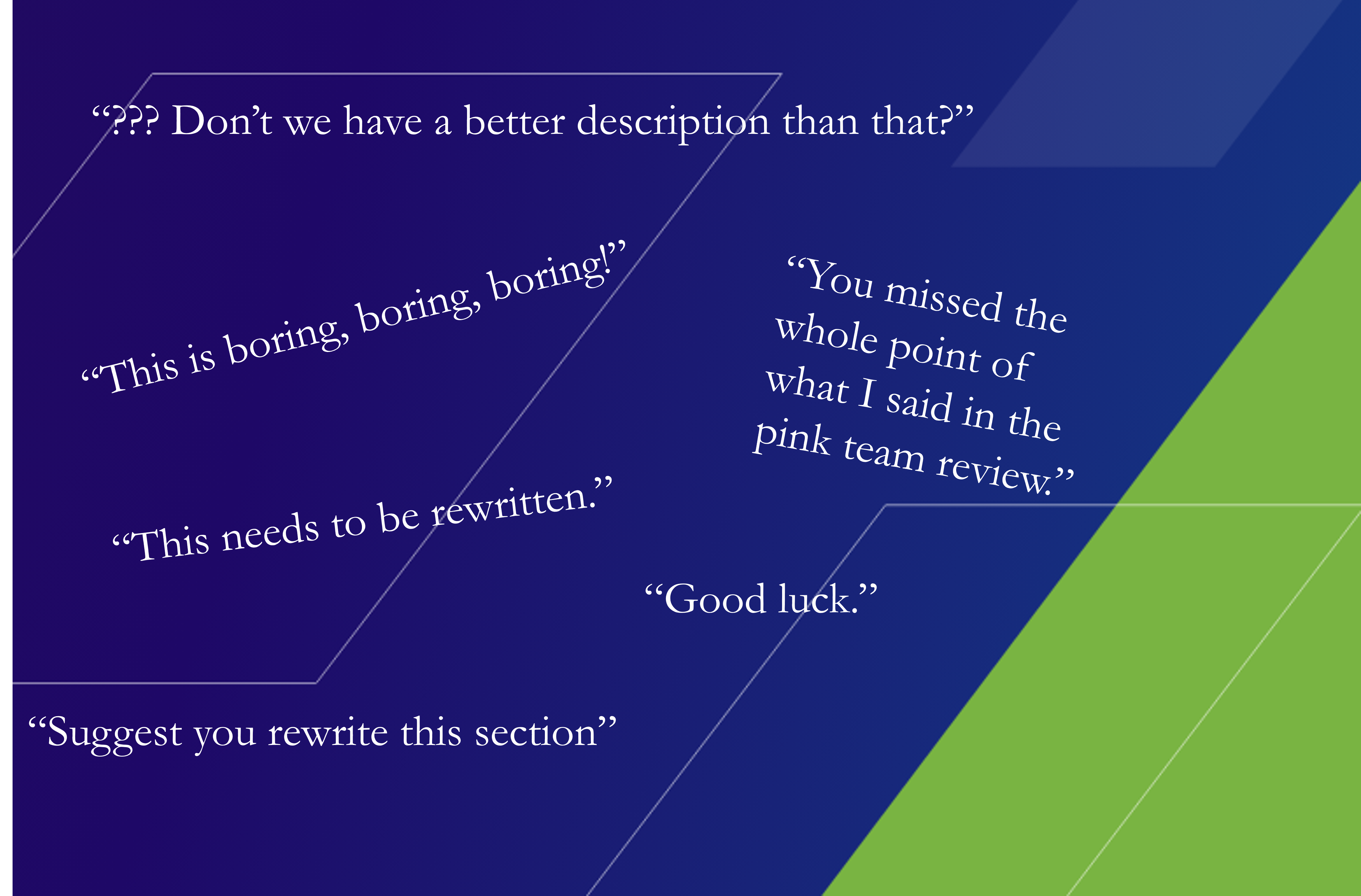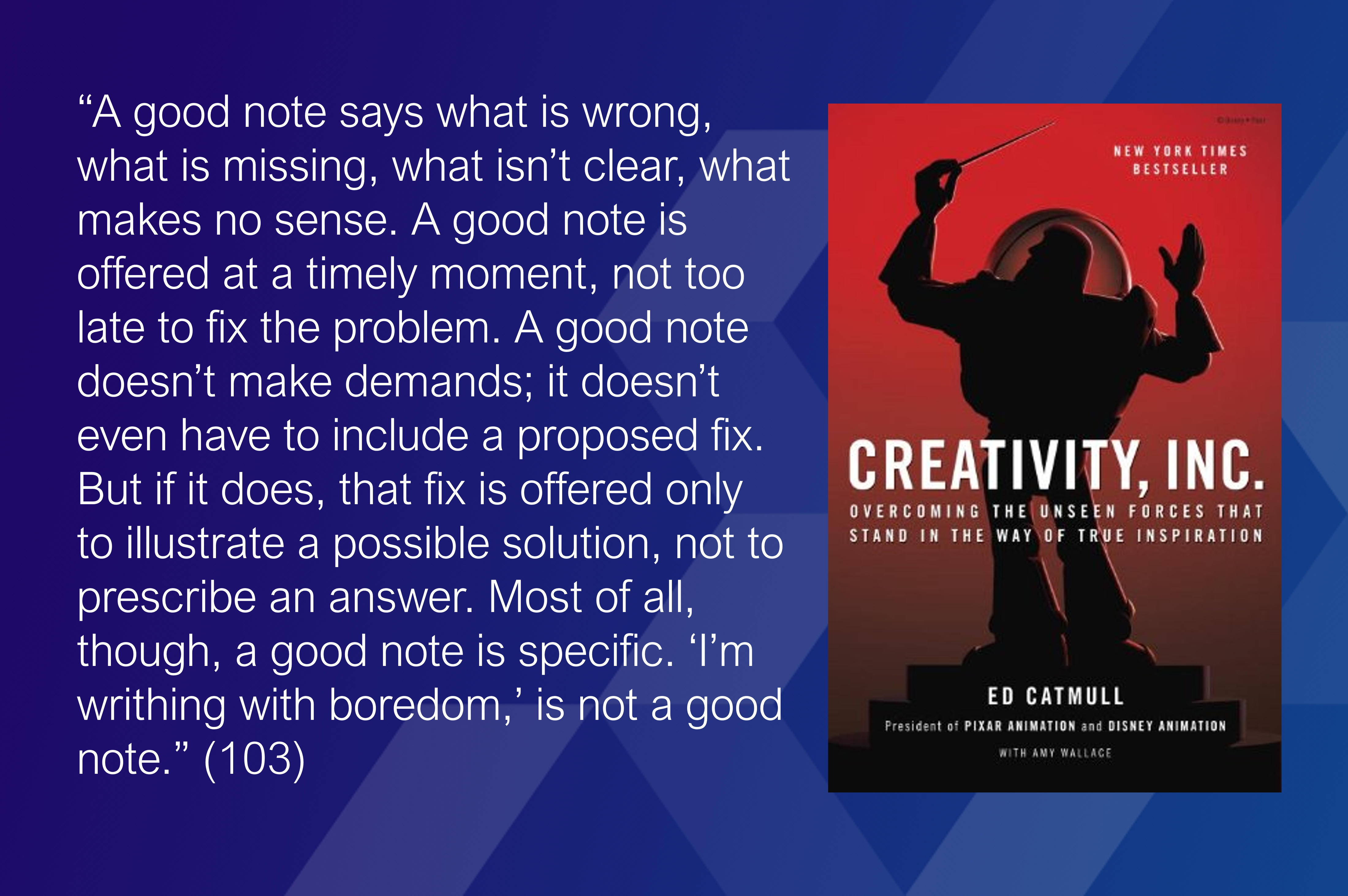The proposal review is a critical part of the opportunity lifecycle. Reviews provide feedback and guidance throughout the development process to ensure we clearly articulate our understanding of the client, present a solution to benefit that client, and properly cover all compliance criteria.
All too often, though, reviewers do not provide the types of comments that will benefit our proposals and our proposal teams. Every proposal manager I know has a litany of war stories from awful review cycles and debriefs. So what makes a good proposal comment? Here are three key ideas of what makes a good proposal comment.
A Good Proposal Comment is Positive. Proposal reviews should be focused on enabling our collective team to improve the product and should be done in a positive, respectful manner. Provide condescending comments that tear down the team and the work product do not help make our bids better. Instead, it breeds acrimony and negativity and makes the team much less likely to consider the comment. Comments like these do not benefit anyone, except perhaps the reviewer’s own ego.

Reviewers need to put together comments that respect the contributors and look to move the project forward. This is not to say reviewers should sugarcoat criticism or softpedal the state of the project. However, they need to do so in a way that doesn’t disparage the content or those who developed it.
Therefore, when you review a proposal, think about the Golden Rule. Develop comments that are the type of feedback you would like to receive. Provide constructive criticism and feedback to ensure the comments are received positively and acted upon accordingly.
A Good Proposal Comment is Specific. Proposal comments need to provide specific guidance on the issue identified and, where possible and appropriate, potential solutions to resolve the issue. Saying “this section needs work” does not do anyone any good! It leaves the writer questioning what needs to be changed and how to best go about improving the document.
Reviewers should focus on providing clear guidance throughout the document. The comment should do two things:
- Identify the issue – specifically point out what is wrong or not clear (“this paragraph does not clearly articulate the step-by-step approach we will take for software development”)
- Identify a POTENTIAL solution – this should not be a dictate from upon high. Instead, it should be a suggestion on how to improve the document (“perhaps you could add a workflow diagram that shows the process and use the text to highlight steps that will make an impact with the reviewer based on their needs”)
It is important to remember that the solution identified is only one potential way to rectify the issue. The reviewer should not demand the writer make this change. In fact, the change proposed might be counter to the current plan or to the theme of the document. However, I always implore my writers to at least consider the comments made to see what is driving the comment. Even if they do not follow the proposed solution provided in the comment, it may provide insight to give them the opportunity to identify the right path forward.
A Good Proposal Comment is Timely. Finally, a good proposal comment is given at the appropriate stage. For example, making small grammatical changes at Pink Team is not the best use of anyone’s time. Similarly, ripping apart the bid solution at Gold Team really does not serve anyone’s interests.
Use the guidance of your proposal manager in your inbrief to see what types of comments are appropriate at this point in the proposal review process given the resources available and the time remaining in the development process. Not only does this put you in the good graces of the proposal team, it also makes sure you allocate your time and energy on comments that can actually improve the document at that stage.
Conclusion. I began thinking about reconceptualizing proposal review comments when I read Creativity. Inc. by former Pixar and Disney Animation President Ed Catmull. I realized the Brain Trust model of reviews used within his organizations is a great parallel to the proposal review process. Built on trust and the goal of improving the project, the Brain Trust gives feedback to the project team to help improve the end product. Catmull summarizes their approach as:

I use this quotation in every review in-brief and reviewer training I deliver, as I feel it best summarizes what we should aspire to in our proposals. As we get closer to getting this type of feedback during the proposal lifecycle, the more confidence and higher morale our proposal contributors will have, which will enable us to develop better, more successful proposals.
Reviews are just the beginning of how we can find inspiration from organizations like Pixar and Disney to improve our proposals. For more tips on how to inject creativity and empathy into your proposal process, pick up Kevin’s latest book, Keys to the Castle, today in paperback or for Kindle. Click here to get your copy today!
